HMS Queen Elizabeth is the largest and most powerful warship ever constructed for the Royal Navy, but what will she carry?
The term now used for the carriers embarked squadrons is ‘Carrier Air Wing’ (CVW), the previously used Tailored Air Group (TAG) has fallen out of official use. The vessels are capable of deploying a variety of aircraft in large numbers, up to a maximum in the upper fifties in surge conditions.
Captain Jerry Kyd, commander of HMS Queen Elizabeth, commented on the initial deployment and the gradual increase in air wing numbers:
“We are constrained by the F-35 buy rate even though that was accelerated in SDSR in 2015, so initial operating capability numbers in 2020 are going to be very modest indeed. We will flesh it out with helicopters, and a lot depends on how many USMC F-35s come on our first deployment in 2021. But by 2023, we are committed to 24 UK jets onboard, and after that it’s too far away to say.”
In addition to the joint force of Royal Air Force and Royal Navy F-35Bs and their pilots, the air wing is expected to be composed of a ‘Maritime Force Protection’ package of nine anti-submarine Merlin HM2 and four or five Merlin for airborne early warning; alternatively a ‘Littoral Manoeuvre’ package could include a mix of RAF Chinooks, Army Apaches, Merlin and Wildcat.
We understand that vessel would still carry at least one F-35 squadron aboard in such circumstances to offer air defence as well as support to the helicopter assault activities. The Crowsnest AEW&C aircraft will come from a number of the embarked Merlins (any of which can be fitted with the sensor package), the number again scaling with requirements.
Recently, the Ministry of Defence confirmed plans for the deployment of American F-35 aircraft alongside British jets aboard HMS Queen Elizabeth. It is understood that the US aircraft will augment British jets on coalition operations.
We discussed claims that the vessel will not have enough jets assigned to her with retired Air Marshal Greg Bagwell who said:
“There is absolutely no need to fix a flexible capability so far in advance – it hems politicians in unnecessarily.”
A source we spoke to, currently flying the jet, explained to us that the vessels will deploy with the number and type of aircraft required for a specific deployments:
“Where F-35B is based is entirely down to the most suitable basing option for the tasks/missions is being sent to do. If that’s a well-founded host nation base, great; if it’s the Carrier, great; if it’s an austere location, fine. Range, logistics and other ‘enablers’ such as AAR and connectivity will determine what’s the best option.”
Around the time the first carrier deploys operationally, the UK will have 42 F-35 aircraft, with 24 being front-line fighters and the remaining 18 will be used for training (at least 5 on the OCU), be in reserve or in maintenance.
Uniquely for a vessel of this size, it will be common to see the jump-jet F-35B appear to land conventionally. Although the F-35B is fully capable of performing vertical landing, in a similar fashion to the way that the Harrier and Sea Harrier operated, this method of operation places limitations on the loads that the aircraft is capable of returning to the ship with.
As a consequence, to avoid the costly disposal at sea of both fuel and munitions, the Royal Navy is developing the Shipborne rolling vertical landing (SRVL) technique. SRVL is a process designed to land jump-jet aircraft that uses both the vertical thrust from the jet engine and lift from the wings, thus maximising the payload an aircraft can return with and stopping the financial waste that comes with dropping expensive weaponry in the sea in order to land vertically.
Another operational advantage of this technique is that it can increase the landing payload capacity of a V/STOL aircraft, which can be restricted when it lands vertically. It can also reduce the level of wear on the lift engines and extend their operational life. Similarly, it can reduce the amount of wear upon the deck surface of a carrier caused by the downward jet exhaust from vertical landings.
The Queen Elizabeth class mark a change from expressing carrier power in terms of number of aircraft carried, to the number of sortie’s that can be generated from the deck. The class are not the largest class of carrier in the world but they are most likely the smallest and least expensive carrier the Royal Navy could build which still have the advantages that large carriers offer.
British F-35B initial operational capability is scheduled will be declared in December 2018 for land and the from the Queen Elizabeth class aircraft carriers in 2020.




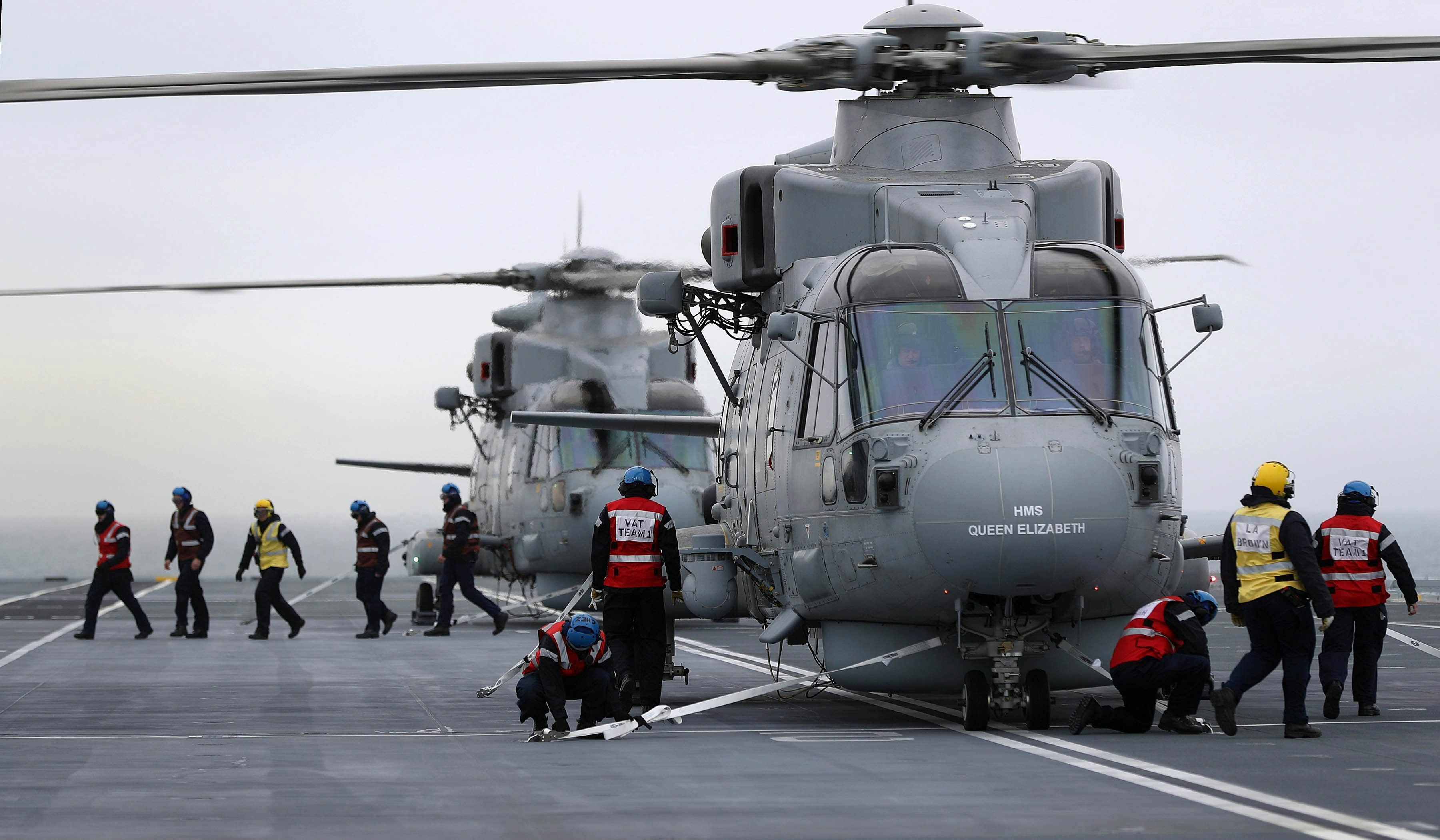
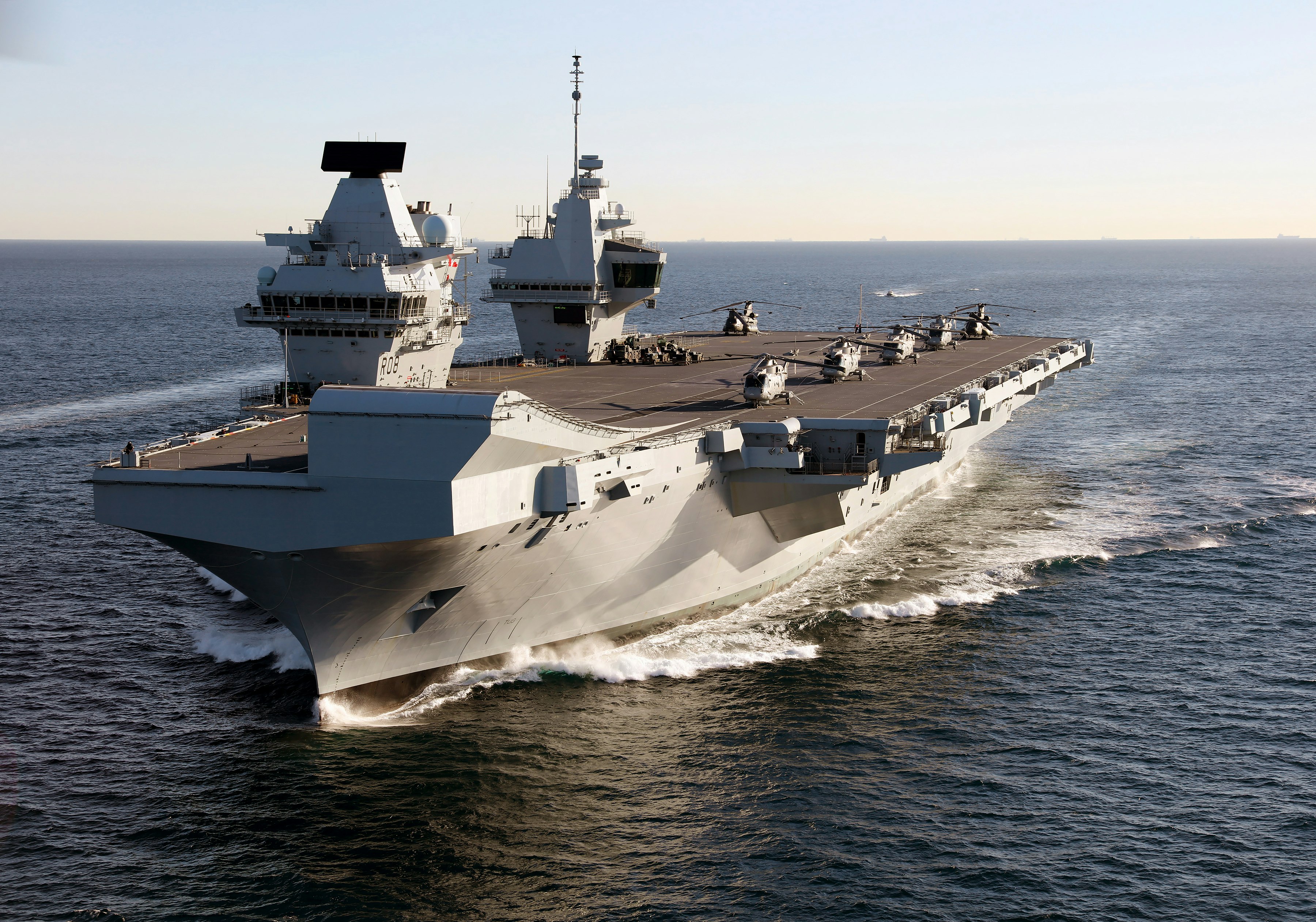
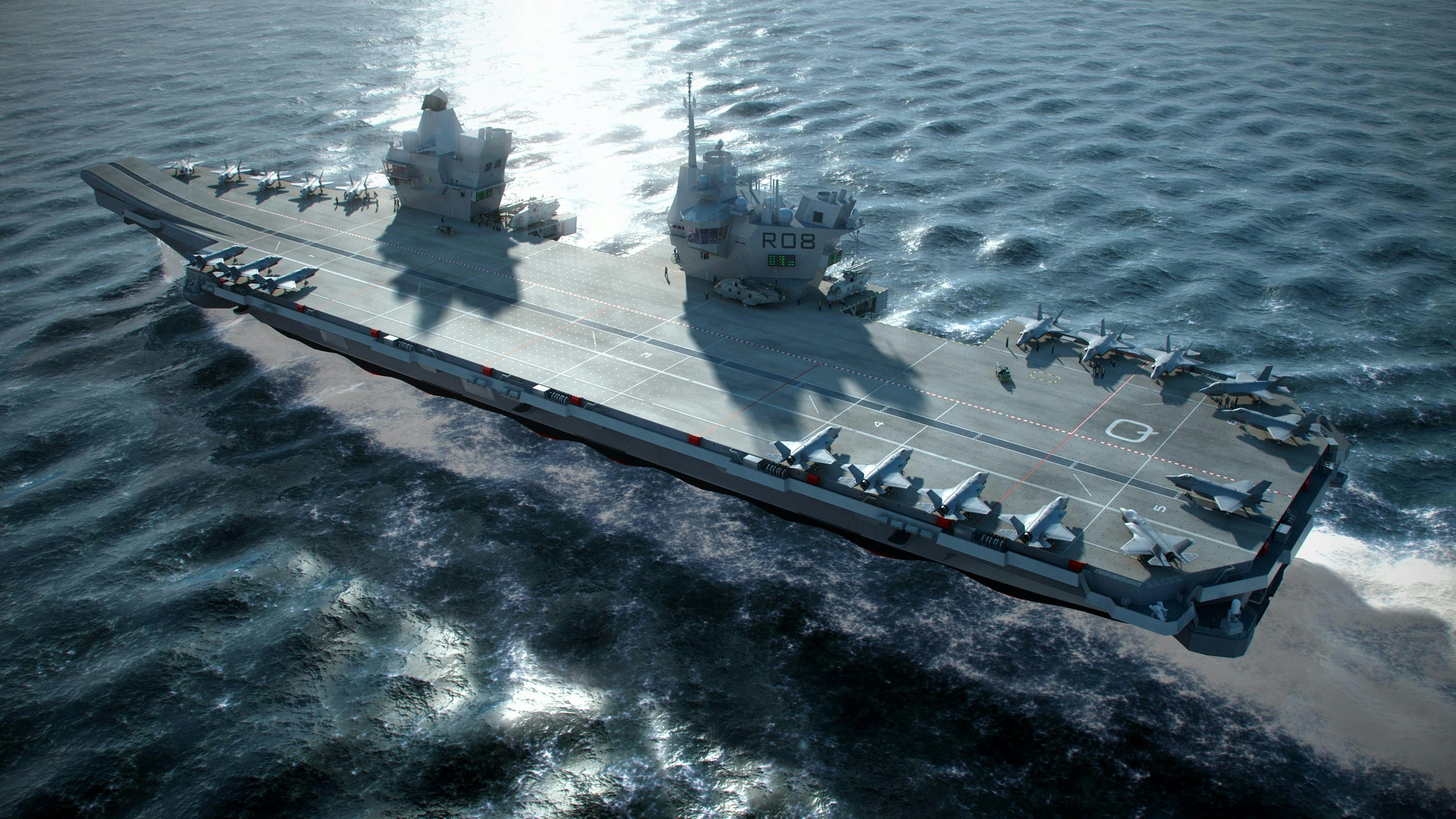
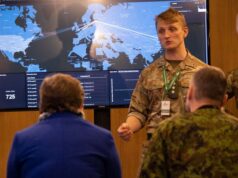

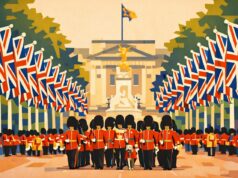








Exciting times. The Royal Navy are in the process of regenerating capabilities we haven’t possessed as a nation since Ark Royal (R09) was operational.
Thank God we didn’t go down the route of “Invincible plus” light carriers which some people who should have known better, were advocating.
Yeah, and it’s not just QEC and F-35B at the party. With first steel cut we should also see T26 becoming real over the next few years and hopefully the highly capable in its primary role T45 getting its fixes and able to perform its role without the current anxieties (T45 has performance anxiety?).
has anyone seen the new u.s.s sea hunter? at less than£100 million, its got be something the u.k has got to get to the forefront of. especially if you want to expand the fleet faster and cheaper. forget the type 31 build a dozen of these.
Four opration squadrons of F35 simply isn’t enough. We realistically should have 6 minimum. This could easily be achieved as we do plan to punches 138, and instead of creating the planned two extra typhoon squadrons with older aircraft simple give them the F35.
Harry the reason the extra Typhoon squadrons are standing up is to keep squadron numbers current once GR4 retires.
If not the RAF has 6 Fast Jet Squadrons left, 5 Typhoon plus 617.
Unacceptable given that in 2010 the RAF has 12, and even that was unimaginable at the time when once there were around 20 just 6 years earlier.
Giving these squadrons the F35 is not possible as the aircraft does not exist in numbers yet for us and will not for some time.
The Tornado crews are here now. We need the Squadrons now, even if its spreading existing assets further.
Given that every cut to HM forces establishes a new low that is then the benchmark, example 19 Frigates which is ridiculous yet everyone is desperate even to get to that number, does anyone seriously think that if we went down to 6 Squadrons the extras would ever happen?
Fair enough. So in that case we should convert those two typhoon squadrons to f35 in time.
Yes that is indeed the plan Harry.
As enough F35 come on line the older retained Tranche 1 Typhoon retire and F35 squadrons increase to 4.
Leaving the current 5 Typhoon squadrons and 4 F35 Squadrons.
Of course with endless cuts plans change before they are even fully realised.
Well my point is we should have 6 f35 squadrons.
Typhoon and F-35B fulfill different roles.
Hard to believe but back in Gulf War 1 the RAF had 31 fast jet squadrons!
Don’t. It’s painful to think.
That’s actually a little bit scary.
You can justify some of the reduction in 30 front-line RAF fast-jet squadrons (plus two FAA units) from 1991, in terms of the expensive, but effective, smart-weaponry that today’s aircraft carry.
Back in 1991, the tactic was mainly low-level attacks using “dumb” thousand pounders, or the JP233 sub-munitions dispenser.
Today, the air-force is using advanced weaponry, and less risky stand-off tactics.
Still, only nine squadrons is indeed SCARY; the reason why I would like to limit the F35B purchase to about 70 airframes for the FAA – and supplement the superlative Typhoon in RAF ranks with an F-35A buy instead.
ya harry this is being cut back even more in the future. we now only plan to 60 with 24 typhoons being retired. next thing you know they our gonna decrease our size to only 50 personals and claim they are formidable! Huh typical British.
What are you talking about? It’s the budgets cuts over the last 30 years that are responsible not these ships.. Get over your obtuse reasoning and grow up..
Harold.
I respect your time in the navy greatly, but I’m curious about your dislike of the carriers.
Would you have preferred Ark Royal and Illustrious were not replaced?
Or would you have liked to see smaller carriers?
As a naval type do you not agree that to control the sea the two greatest assets are carriers / carrier aviation and SSNs.
This is all good news – a couple of points:
1. It is regeneration of a capability that was cut due to budgets – it should therefore have had a separate budget to regenerate – as to do this is more expensive than to continue.
2. It is a game changer for the UK and gives us real scale of capability.
3. It is innovative in so many ways and from an engineering point of view – unique.
4. It is actually very good value for money when set against peer vessels.
5. It is the fulcrum for the expeditionary force the UK wishes to project over the next 50 years.
I am sure that once it becomes a real asset to politicians it will be fully funded and used and we all need to remember that it is still in the very early stages of its lifecycle and we need to accept that it will take 10 years to bring this capability back fully.
Good job to all I think
I’ve no doubt you two go together hand in hand.
And as that rag has a vendetta against the likes of GCHQ who work to protect this nation yet happily supports the likes of Snowden and Islamist terrorists coming and going as they please no one here is even mildly surprised you are finding enjoyment at whatever nonsense that left wing pile of garbage is saying.
Let’s cut the nonsense Daniele. While I disagree with the comments made about the carriers, don’t be so stupid that you pretend that it’s only people on the left that disagree with their building. Many officials on both sides are concerned about their vulnerability, and other obvious right wing orientated people on this website have expressed concerns that they have no point defense missile system, potentially making them convenient targets for hypersonic missiles being developed, that we currently know little about. Corbyn himself is going to be talking about tax avoidance at a UN event, if he could sort it out then that’s a lot of extra money for shiny things. As for terrorists coming and going, well you’re just lying to yourself.
Don’t believe I pretended anything Evans. And where did I say “only” people who are left leaning in my dismissal of the Guardian above?
You are putting words in my mouth.
Are you denying islamists have returned to the Ok? Seriously? Believe it’s been well documented so no I’m not lying to myself.
Happy to agree to disagree.
Evan P – Bypassing the Left vs Right debate above I did smile at your childish belief Corbyn a) talks any sense whatsoever let alone to the UN, b) can come up with any half sensible ideas on tax, c) will ever be in any position to do anything and d) if he ever got his hands on any new money it wouldn’t be gone in an instant on Socialist baubies and welfare black holes.
You really believe a man who is a lifelong member of CND, who has suggested we send Trident subs to sea with no missiles and actually advocated investigations into British troops who served in Iraq and called for the Armed Forces and intelligence services to be scaled back has the slightest interest in improving our defences?
Look at the hat he wears – he is a Commie bastard masquerading as a Socialist to kid the Momentums and Students of the world. A man who cannot even bear to sing our National Anthem but happily sings ‘the Red Flag’.
Corbyn is a walking ‘real and present danger’ to the UK and must never ever be allowed to get his IRA friendly hands on the levers of power.
Preventing corporations from avoiding tax sounds sensible to me, Chris. And Daniele, by calling it “left wing” you are implying that that in itself is a bad thing, and a reason for why the author is against the new carriers. You used his opinions to count against the left, which doesn’t make any sense.
Corbyn sorting out tax. You jest.
I thought the Vangard class were the RN most powerful warships……
Good point Kev. they are – and hopefully never to be used….
Notice that people keep referring to an eventual total of ‘4’ Lightning squadrons. That is certainly all that the MOD has announced so far, 2 x RN and 2 RAF. But that doesn’t compute with purchasing 138 aircraft, if the putative order is ever fulfilled without further cost and capability cuts.
A squadron has a nominal allocation of 19-20 aircraft – 12 front line, 3 squadron reserve, 3 wartime reserve, 1.5 attrition reserve to cover accidents and write-offs. 6 squadrons – which I think is the actual target – would therefore total up to 120 aircraft.
Because of the simulator training and absence of a 2-seat trainer, the training OCU will be much smaller than with previous aircraft types; instead of the 2.75 trainer allocation per squadron, or 15 in total for 6 combat squadrons, it will fall to probably 10 or fewer. That takes the total to max 130.
There will likely be no more than 3 or 4 in the OEU. There will likely be 2 wings, one RAF, one Carrier Strike, each with 2 aircraft for the wing commanders, 1 operational, 1 reserve. That totals 138 aircraft max, exactly as the originally-anticipated order, hence I think the aim is to have 6 combat squadrons, 2 RN and 4 RAF.
That does not give the RAF much of an attacking/interdiction punch, 48 front-line aircraft would not last long in a hot war. Ditto 24 front-line aircraft on board the carrier; if 12 are tasked with air defence and 12 with attack, that is somewhat wafer-thin in both roles.
Oh for a government that values defence and sets a realistic minimum target for weapons platforms, and rises to funding it, we are currently miles below even the most minimal peacetime requirement for army brigades, warships and fast jet combat aircraft.
I read an article in Wired magazine where Captain Kydd stated that each QEC can take 70 F35B’s in surge conditions (+helos).
I suspect the most we would ever put on one would be 48 so a frontline force for the RN of 96 seems reasonable. A similar force for the RAF would be ideal – but actually if we went 64 for each force with an assumption that in surge with a 2 carrier force the RN would need 96 of the 128 force then this looks reasonable.
I find it fairly pointless to run the Carriers with anything less than 32 F35b’s as it costs too much money to go around 2/3 empty and we should really project the power it can project by actually filling it.
We actually need an operational force of 138 F35b’s and even this wont make up the numbers for the loss of tornado and harrier which it is replacing. I also dont buy the argument of less does more as actually all our competitors dont stand still either and everyone else has better kit and often more of it.
Think we need to increase the size of our fighter/bomber force and F35’s working in tandem with Taranis would be my preference to get scale and superiority.
138 commited to order, but only 63 in the active fleet. It will be a very long time,if ever, we see 36 British F35’s on one of our carriers, classic British defence . Cut like mad to secure a game changing capability, only for that capability to be cut back as well. The carriers are a huge achievement to be proud of, and even a small number of F35’s on-board will be very capable. Just a shame we can never seem to do things properly due to budget cuts, I couldn’t imagine the USN deploying a nimitz class with only 12 F18 super hornets on-board
It really does beggar belief – we have a requirement for 2 carriers to sail together (I know they wont most of the time but that is beside the point) and each carrier can easily take 36-48 of these planes creating an optimal FAA force of 72-96.
It is fairly pointless IMHO to sail around the 2/3 empty and whilst I am not saying we need to have this capability day 1 – it does need to happen within the next 10 years.
If we dont do this then we take the risk of becoming a laughing stock – all show and no substance as the only reason a carrier exists is to deliver aircraft to a conflict zone, everything else is additional.
I do agree that these will have utility with lower number of aircraft, but it really is a missed opportunity if we go down this route.
I suspect these carriers will be significant in our ongoing relationship with Europe and allow us to maintain our position in NATO as the defectors CnC for the NATO fleets, as such we do need to invest in them further.
It should come as no real surprise that these ships require 36 planes each (minimum) and this should have been budgeted and planned more thoroughly.
Great asset and it is wasteful not to use it to a fuller capability and one that has massively benefitted the UK already through technical innovation, jobs and skills creation. Let’s build upon this and not let it all slip out of our hands (which we are prone to doing as a country and via all govts of the last 50 years)
Found this for you. Interesting read.
http://www.wired.co.uk/article/navy-queen-elizabeth-warship
Did anyone else give a fist punched ‘YESSS’ to see our new DefSec had a right go at Hammond this week. To the point where Mrs May had to separate them and the pair were ushered into the Headmistress’ office for a bollocking. Good to see him standing up Defence….
Hammond is quickly becoming an out of step liability with contradictory comments everywhere. Even David Davies had to slap him down on the BBC this morning (politely of course). Mrs May is now secure for some years now and she should kick Mr Hammond down the road ….
I believe an f35 air frame has a projected life of around 36 years ( 8000flying hours) with a planned production run of around 50 years. So we are unlikly to ever see an inventory of 138 air frames, with the first decades purchases being scrap by the time we see delivery of the last air frame. Also I’m not seeing much chance of a direct replacement to the F35 (manned single seat fighter jet) ever being produced so I imagine the last decade of both the F35s and Queen Elizabeths will see them trying to keep current in a very different world.
I agree, we will never have 138 in service but we could aim slightly higher than 4 frontline squadrons. I would aim for eventualy 6 Typhoon and 3 F35B squadrons for the RAF + 2 F35B FAA squadrons and the OCU and the 3 airframes at EAFB. So frontline strength of 60 +15 (75) and a sustainment fleet of 20-25 with the rest as replacements for early airframes and attrition over the lifetime of the programme. There seems to be a perception that the carriers are designed to operate more aircraft than is actually the case. She may be able to ferry upwards of 60 aircraft but is very different to operating that number. The carrier was designed from the outset to funtion optimally with an airgroup of about 40. 36 F35B and 14 Merlin (50 total aircraft) will be about all she can comfortably operate, anything more and sortie rates drop and workloads increase. Even in a worst case scenario we couldn’t put more than 36 F35B on 1 carrier and 24 on the other as the rest of the slots are needed for helos. With both carriers fully committed assume 100 aircraft slots, if 60 are filled by F35B that leaves 40 helicopter slots which will fill up fast. 9 Merlin ASW, 5 Merlin AEW, 12 Merlin HC4, 6 Apache, thats 32 right there plus any extra AEW Merlin you can scrape up and any Chinooks or Wildcats you fancy bringing along.
Based on the offer to Belgium, F-35 are costing $190m+ each! Much as I would like to see the RN have 60 Block 4 software, Block 1 engine upgrade F-35B, I cannot see the money being found, anytime soon.
Its too late to argue about the carriers. We are where we are. However, if you wanted 2x 65,000 ton, you should have gone CTOL with cats & traps. If you wanted STOVL, then 3x 35,000 ton Super Invincibles, would have been more flexible. All academic now, however.
The 3x smaller would never have worked, since it would require almost 50% more sailors over 2x larger, and the navy just doesn’t have the crew needed.
Could we have gone 2x smaller and saved a load of money, who knows. I suspect the savings wouldn’t have been as big as we might expect due to R&D and fixed costs around construction.
Having 3x carriers means 2 can be frontline carriers loaded with fast jets, while the third is loaded out for the assault carrier/commando role. Also gives you a breathing space for refits. If one is in dock, you still have the other 2. Also means you can have a long deployment task lasting years, as you have 3 carriers to rotate through it.
We are where we are. Chances are there will be no more F-35B on our new shiny 65-70k carriers than there would have been on a 35k carrier. Bit sad to waste fuel on a big carrier running half full/third full of fast jets.
Righto, need to get this off my chest as I think I’m missing a trick here!
There has been a lot of talk about the increased sortie generation that the QE and the F35 will bring to the party, but I don’t see the logic.
1. The ship does not have an angled deck which is the norm post WW2. By having an angled deck you can carry out consecutive take-offs and landings. I hate to make a comparison between the QE, the Kuznetsov and the Liaoning. But they have a similar size and length flight decks (although the Kuznetsov class is longer).
2. The F35 in all the publishing is shown right on the stern ready for take off. This with the addition of the bow ramp maximises the amount of lift generated from the space available and thus increasing the amount of fuel and payload it can carry. The Russian/Chinese carriers make the use of a retractable jet deflector door as a reaction aid in conjunction with the bow ramp, thus shortening the amount of “runway” required.
3. The RN is investigating the assisted rolling landing of the F35. Originally the F35 was designed to land like a Harrier i.e. vertically. However, due to the amount of weight the returning aircraft may be carrying it is not very cost effective as lot of fuel and weapons need to be dumped to reach the nominal safe weight for vertical landing. Therefore, it has been decided to investigate the use of a rolling landing with engine+lift fan assist. This will mean a more realistic combat weight can be used for landing i.e. with unexpended weapons etc.
4. If the full length of the QE’s deck is going to be used for both take-offs and landings then how are they going to speed up sortie generation?
SRVL is for when aircraft are returning to the ship with unspent ordance, to avoid ditching expensive weapons to land vertically. Maybe in a high sortie scenario most returning aircraft will have expended most if not all munitions and should therefore be ok to land vertically. Not sure that’s actually the answer though as the sortie generation targets have been around since before the idea of SRVL. The real question is will the F35B Support the proposed sortie rates? The target is 110 sorties per 24 hour period which is almost exactly what 36 F35B flying 3 sorties per 24 hour period (108) gives you. 110 launches and 110 recoveries is about 10 per hour over 24 hours which even without the angled deck should be easy, if the F35B can cope.
Why are Anglos always such war-horny retards eager to die for their Jewish-banking-mafia-masters?
Why is the QE carrier air wing half the size of a nimitz class?
Indeed, the Nimitz can top our at 130 f/a 18s.
Three times the size of the QE.
But it’s 2/3 size of a nimitz.
Why isn’t it, say, 66 aircraft?